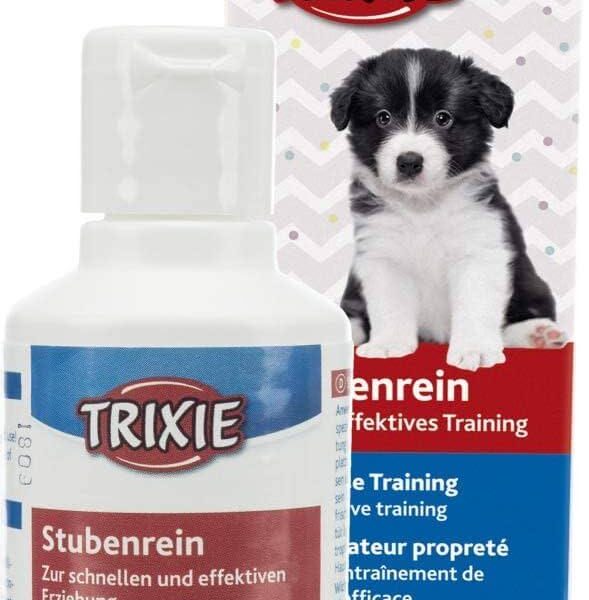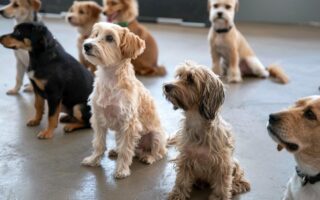Title: The Art of House Training: A Harmonious Journey to Shared Spaces
Introduction:
Welcoming a new furry companion into your home is a joyous occasion, filled with moments of laughter, curiosity, and sometimes, a bit of chaos. As the excitement of tail wags and playful pounces unfolds, the importance of house training—an essential rite of passage for every pet owner—becomes clear. This journey is not just about teaching your pet where to relieve themselves; it’s about establishing a mutual understanding and respect for your shared living space. House training is a blend of patience, consistency, and love, transforming your home into a safe haven for both you and your animal friend. In this article, we will explore the principles of effective house training, address common challenges, and unveil tips that cater to diverse pets and lifestyles, paving the way for a harmonious existence together. Whether you’re a first-time owner or a seasoned pet parent, the insights shared here will guide you toward achieving success in this vital aspect of pet care.
Table of Contents
- Understanding the Basics of House Training Your Pet
- Creating a Consistent Routine for Successful Learning
- Effective Techniques for Reinforcing Positive Behavior
- Troubleshooting Common Challenges in House Training
- Q&A
- In Conclusion
Understanding the Basics of House Training Your Pet
House training your pet is a foundational step in creating a harmonious living environment. It involves teaching your furry friend where it is appropriate to relieve themselves, which not only helps maintain cleanliness but also fosters a sense of security for your pet. To embark on this journey, consider the following strategies that can simplify the process:
- Establish a Routine: Take your pet outside at regular intervals, such as after meals, naps, and playtime.
- Positive Reinforcement: Reward your pet with treats or praise immediately after they go in the right spot.
- Supervision: Keep your pet in sight to notice any signs that they need to go out.
- Create a Designated Area: Consistently lead your pet to the same spot to help them associate it with bathroom time.
A clear understanding of your pet’s behavior can significantly enhance the training experience. Pay attention to cues that indicate they need to relieve themselves, such as circling or whining. Establish a “potty command” to encourage them to go when you are in their designated area. Here’s a simple table to summarize common signs your pet may need to go out:
| Behavior | Meaning |
|---|---|
| Circling | Searching for a spot to go |
| Whining or Barking | Indicating urgency |
| Sniffing Around | Exploring for a bathroom spot |
| Restlessness | Anxiety or need to relieve themselves |
Creating a Consistent Routine for Successful Learning
Establishing a reliable routine is key to fostering an environment conducive to successful learning. By setting specific times for study sessions and designating unique spaces for various activities, you encourage a mindset that values focus and discipline. Here are some essential elements to incorporate into your daily schedule:
- Consistent Study Hours: Choose a fixed time each day to dedicate to learning.
- Break It Down: Divide study subjects into manageable blocks to avoid overwhelm.
- Prioritize Tasks: Establish a to-do list to keep track of your learning objectives.
- Incorporate Short Breaks: Use the Pomodoro technique to enhance concentration and retention.
Furthermore, it is beneficial to create a calendar that visually outlines your learning journey. This not only aids in keeping you accountable but also allows you to celebrate small victories along the way. Below is a simple framework to organize your study activities:
| Day | Study Focus | Break Activities |
|---|---|---|
| Monday | Math Concepts | Walk |
| Tuesday | Literature Reading | Stretching |
| Wednesday | Science Experiments | Puzzle Games |
Effective Techniques for Reinforcing Positive Behavior
One of the most rewarding aspects of house training is the ability to develop a strong bond between you and your pet through positive reinforcement. By rewarding desired behaviors, you create an encouraging environment that fosters learning and enhances their overall experience. Some effective techniques include:
- Immediate Rewards: Offer treats or praises right after your pet exhibits the desired behavior to reinforce their action.
- Consistency: Use the same commands and rewards every time to avoid confusion and help them associate actions with outcomes.
- Calm Environment: Ensure the surroundings are free from distractions, allowing your pet to focus on the training session.
- Gradual Progression: Start with basic commands and progressively introduce more complex tasks as they become proficient.
It’s important to understand the value of patience and persistence in this journey. Every pet learns at their own pace, and celebrating small milestones can significantly boost their confidence. Consider tracking progress with a simple table that showcases accomplishments over time:
| Week | Behavior Learned | Reward Given |
|---|---|---|
| 1 | Outdoor Potty | Treat & Praise |
| 2 | Basic Commands | Playtime |
| 3 | Consistent Schedule | Favorite Toy |
Utilizing these techniques not only enhances the training process but also ensures your pet feels encouraged and motivated. By continually reinforcing positive behavior, you pave the way for a well-behaved companion who understands expectations and thrives in their environment.
Troubleshooting Common Challenges in House Training
Training your dog can occasionally feel like navigating a maze, with unexpected twists and turns that can lead to frustration. Consistency is key when addressing common challenges. Ensure that you establish a clear, routine schedule for bathroom breaks, rewarding your pet immediately after they eliminate in the right place. If accidents occur indoors, try to stay calm; scolding them after the fact will only confuse your pup. Instead, focus on positive reinforcement and redirecting them to the appropriate behavior. Here are a few tips to consider:
- Keep a log of successful bathroom breaks to identify patterns.
- Limit their access to areas of the house when unsupervised.
- Use specific verbal cues when encouraging them to go outside.
Another challenge might be linked to your dog’s age or temperament. Puppies may have smaller bladders and less control, while older dogs might have health issues affecting their training. If your dog is consistently having accidents despite your diligence, it may be worth consulting a veterinarian or canine behaviorist. Below is a simple table to help you understand common age-related issues:
| Age Group | Common Challenges | Training Tips |
|---|---|---|
| Puppy (0-6 months) | Frequent accidents, short attention span | Increase potty breaks, use puppy pads |
| Adult (6 months – 7 years) | Inconsistency or stubbornness | Implement a reward system, be patient |
| Senior (7+ years) | Health issues, decreased bladder control | Adjust potty schedule, consult a vet |
Q&A
Q&A on House Training: A Guide for Pet Owners
Q1: What is house training, and why is it important?
A: House training, often referred to as potty training, is the process of teaching a pet, primarily dogs, to eliminate waste in appropriate areas, typically outside. This is crucial for maintaining a clean living environment, ensuring the pet’s health, and fostering a harmonious relationship between pets and humans. A house-trained pet is also a joy to have indoors, allowing for greater freedom and comfort for both parties.
Q2: When should I start house training my pet?
A: The ideal time to begin house training is when your puppy is around 8 weeks old, although older dogs can also be trained with patience. Early training helps establish a routine for your pet, making the learning process smoother. However, it’s never too late to start; older dogs can learn new habits, so don’t hesitate to begin the training whenever you welcome a pet into your home.
Q3: What are some effective methods for house training?
A: There are various methods to house train a pet, but the two most popular techniques are crate training and leash training.
- Crate Training: This involves using a crate as a safe space, leveraging the natural instinct of dogs not to soil their sleeping area. Limit time in the crate to avoid discomfort, and ensure to take the pet outside regularly.
- Leash Training: Taking your pet outside on a leash at regular intervals, especially after meals and naps, reinforces the concept that outdoors is the place to relieve themselves. Always reward them immediately after they go outside, using praise or treats, to create a positive association.
Q4: How long does house training take?
A: The timeline for house training can vary significantly between pets, depending on factors like age, breed, and past experiences. Generally, puppies can take anywhere from a few weeks to several months to become fully trained. Consistency, patience, and positive reinforcement are key components to accelerate the process—remember, every pet learns at their own pace.
Q5: What should I do if my pet has accidents indoors?
A: Accidents are a normal part of house training, so it’s important to remain calm. Clean the area thoroughly to remove any scent markers that might encourage repeat offenses. Avoid punishment, as this can create fear and anxiety. Instead, use these moments as learning opportunities to reinforce proper behavior—take them outside immediately after an indoor accident and reward them for going outdoors.
Q6: Are there any common mistakes to avoid during house training?
A: Yes, some frequent pitfalls include:
- Inconsistent Schedules: Regular bathroom breaks help establish a routine.
- Ignoring Signs: Look for signs your pet needs to go, such as circling or whining; waiting too long can lead to accidents.
- Punishing for Accidents: This can harm trust and slow the learning process; focus on positive reinforcement instead.
- Skipping the Rewards: Failing to reward your pet after successful trips outside can slow their understanding of what is expected.
Q7: Can older dogs be house trained?
A: Absolutely! Older dogs can learn house training, although it may take longer compared to puppies. It’s essential to evaluate and understand any underlying health issues that may contribute to accidents. With patience, consistent routines, and positive reinforcement, dogs of any age can adapt to new habits and enjoy a cleaner home.
Q8: What if I’m struggling with house training?
A: If you find house training to be particularly challenging, consider reaching out to a professional trainer or behaviorist for guidance. They can provide tailored strategies and support that best fit your dog’s temperament and your household dynamics. Additionally, don’t hesitate to consult with your vet to rule out any medical issues that could be impacting your pet’s behavior.
Q9: How can I maintain my pet’s habit once they’re house trained?
A: Consistency is key even after your pet is house trained. Regular bathroom breaks, a steady feeding schedule, and being aware of their signs will help maintain their habits. Additionally, continuing to reward your pet for successful outdoor bathroom trips reinforces their behavior long-term.
Conclusion:
House training is a vital aspect of pet ownership that requires patience, consistency, and understanding. By staying informed and using effective techniques, you can create an environment conducive to your pet’s success and enhance your bond with them. Happy training!
In Conclusion
As we wrap up our exploration of house training, it’s clear that this essential process is not merely about teaching your pet where to go; it’s a journey of patience, understanding, and mutual respect. Just as every animal is unique, so too is the path to achieving a well-trained companion. Whether you’re a first-time pet owner or an experienced handler, remember that consistency and positive reinforcement are your greatest allies. Embrace the challenges and celebrate the milestones, as each step brings you closer to a harmonious living arrangement with your furry friend. As you embark on or continue this journey, keep in mind that the real reward lies in the bond you’ll build along the way, paving the path to countless shared adventures in your home. Happy training!

